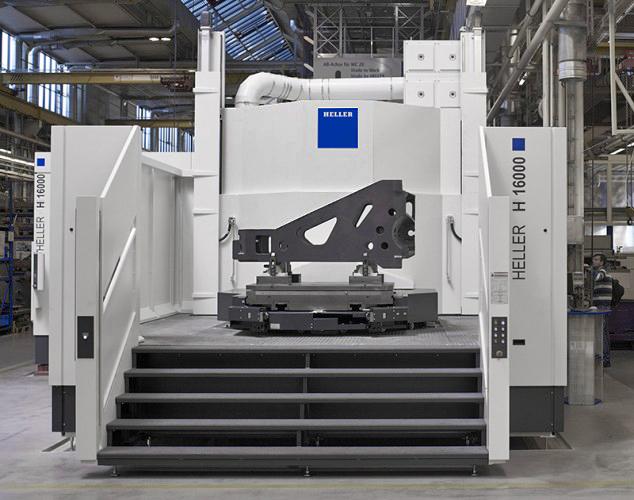
Heller Machine Tools has supplied a large, heavy-duty machine to GKN Aerospace Filton, near Bristol, to rough titanium aircraft components.
It was installed during the latter part of 2017 and this year started producing a family of five structural components from titanium forgings, 24 hours a day, seven days a week.
Six years ago, there was a possibility of the Integrated Machining Facility (IMF) at Filton also being contracted to finish-machine the components. This work has not materialised, but it meant that a large, 5-axis machining centre (from a different supplier) had to be installed at the outset to allow for both roughing and finishing operations to be completed.
During 2017, the customer doubled the lot sizes to be manufactured, mirroring a similar increase in 2016. A second machining centre was therefore needed to cope with demand, but as the contract remains for roughing only, leaving a 3 mm stock allowance ± 0.127 mm over the entire surface of each part, a more cost effective 4-axis CNC machine was deemed sufficient for the task.
Mark Edwards, Operations Group Leader of the Hard Metal Cell within the IMF, took advantage of the H 16000's arrival to re-engineer all five titanium aircraft parts. None requires simultaneous milling in more than three CNC axes and he was able to find significant cycle time savings on the 4-axis machine compared with the 5-axis process routes.
New strategies include taking lighter, faster cuts with solid carbide mills and reducing the number of inserted tools. This has the benefits of assisting penetration of 60-bar coolant to the point of cutting, increasing metal removal rate, improving surface finish by reducing the chatter from interrupted cutting and prolonging tool life.
For the largest of the five structural components, which measures 2,400 mm long by 200 mm wide by 170 mm high, the cycle time was cut from 70 hours across two operations to 52 hours, a saving of more than a quarter. Similar reductions have been achieved on all of the parts, the smallest of which still involves 14 hours of machining.
As an indication of the amount of metal removal involved, a mid-size component measuring 1.1 m long is machined from a 176 kg titanium forging, which is reduced to 60 per cent less at 67 kg after machining.